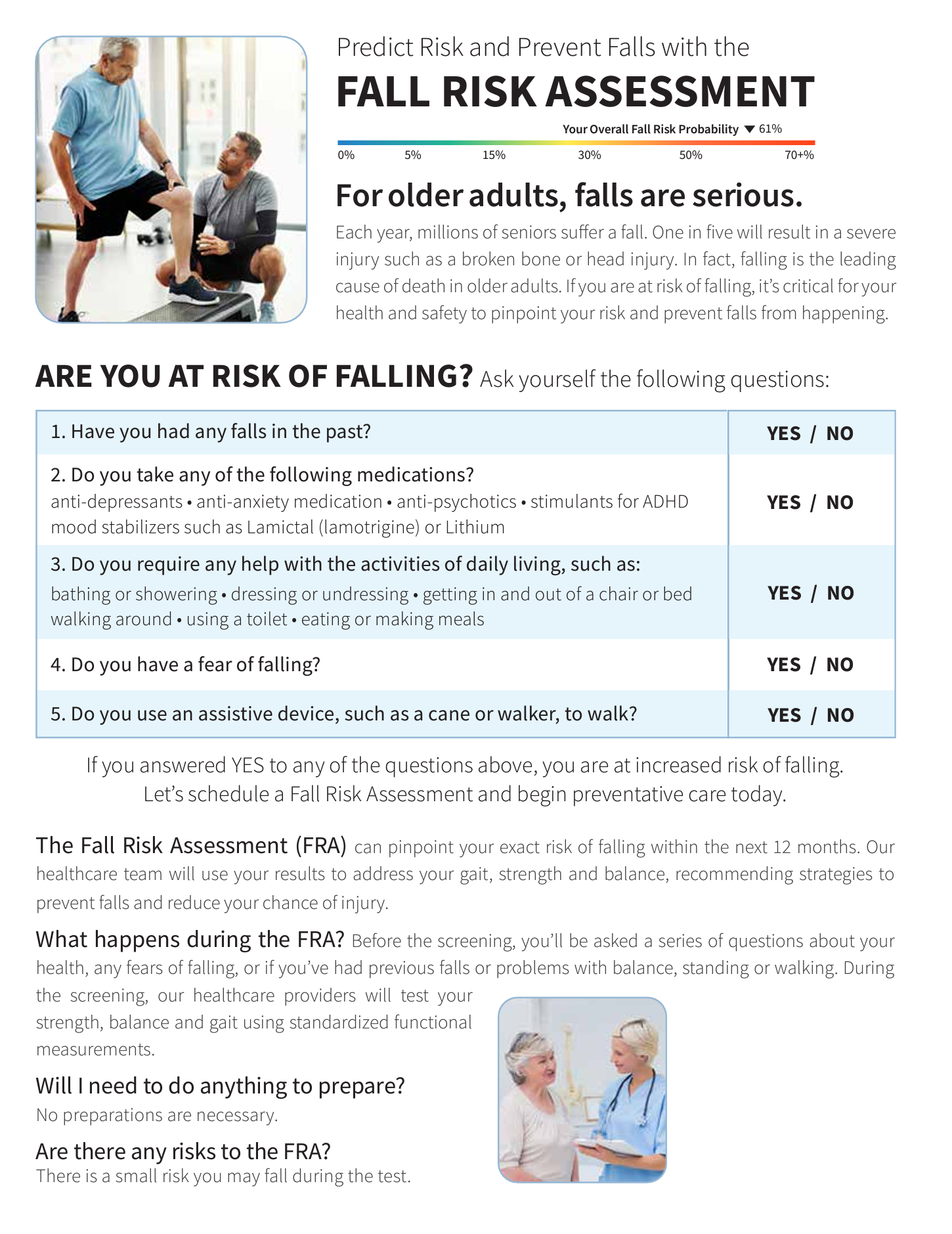Our Dementia Fall Risk Statements
Dementia Fall Risk for Dummies
Table of ContentsHow Dementia Fall Risk can Save You Time, Stress, and Money.What Does Dementia Fall Risk Do?The 5-Second Trick For Dementia Fall RiskLittle Known Facts About Dementia Fall Risk.Dementia Fall Risk Things To Know Before You Get This
The FRAT has 3 sections: fall threat condition, danger element checklist, and activity plan. A Loss Threat Condition consists of information about background of current falls, drugs, psychological and cognitive standing of the person - Dementia Fall Risk.If the client ratings on a risk variable, the equivalent number of factors are counted to the client's autumn risk rating in the box to the much. If a patient's autumn danger rating totals 5 or higher, the person is at high threat for drops. If the patient ratings just four factors or lower, they are still at some risk of falling, and the nurse must utilize their ideal clinical analysis to manage all autumn risk variables as part of an alternative care strategy.
These standard approaches, as a whole, help establish a safe environment that decreases unintentional drops and delineates core safety nets for all patients. Indicators are essential for people in danger for drops. Doctor require to recognize who has the condition, for they are in charge of carrying out activities to advertise individual safety and security and avoid drops.
The smart Trick of Dementia Fall Risk That Nobody is Talking About
Wristbands should consist of the patient's last and very first name, date of birth, and NHS number in the UK. Details need to be printed/written in black against a white background. Just red color must be made use of to indicate special client status. These recommendations follow existing advancements in individual recognition (Sevdalis et al., 2009).
Products that are too far might require the patient to get to out or ambulate unnecessarily and can potentially be a danger or add to falls. Assists protect against the client from heading out of bed without any type of aid. Registered nurses react to fallers' call lights quicker than they do to lights started by non-fallers.
Aesthetic impairment can substantially trigger falls. Maintaining the beds closer to the floor minimizes the risk of drops and severe injury. Positioning the bed mattress on the flooring significantly minimizes autumn risk in some healthcare settings.
All About Dementia Fall Risk
Clients that are high and with weak leg muscles who try to rest on the bed from a standing position are likely to drop onto the bed because it's too low for them to lower themselves securely. Also, if a high individual attempts to stand up from a reduced bed without support, the individual is likely to drop back down onto the bed or miss the bed and drop onto the flooring.
They're designed to advertise timely rescue, not to avoid falls from bed. Audible alarms can additionally remind the individual not to stand up alone. Making use of alarm systems can additionally be a replacement for physical restrictions. his comment is here Besides bed alarm systems, raised supervision for risky individuals also might aid prevent drops.

People with a shuffling stride increase autumn opportunities considerably. To minimize fall threat, footwear ought to be with a little to no heel, slim soles with slip-resistant walk, and support the ankle joints. Encourage person to use nonskid socks to stop the feet from moving upon standing. Motivate individuals to put on ideal, well-fitting shoesnot nonskid socks for ambulation.
The Best Strategy To Use For Dementia Fall Risk
In a research, homes with ample lights report less drops (Ramulu et al., 2021). Enhancement in lights at home may decrease autumn prices in older grownups.

Caretakers are reliable for guaranteeing a safe and secure, protected, and risk-free atmosphere. Nevertheless, studies showed really low-certainty proof that sitters minimize fall threat in acute care hospitals and only moderate-certainty that options like video tracking can minimize caretaker use without increasing loss threat, recommending that caretakers are not as beneficial as originally believed (Greely et al., 2020).
A Biased View of Dementia Fall Risk

Enhanced physical conditioning lowers the danger for falls and limits injury that is sustained when fall takes place. Land and water-based exercise programs might be in a similar way useful on balance and stride and therefore lower the risk for falls. Water exercise may contribute a favorable benefit on equilibrium and stride for women 65 years and older.
Chair Surge Workout click here for more is a straightforward sit-to-stand workout that helps enhance the muscular tissues in the upper legs and buttocks and enhances wheelchair and independence. The goal is to do Chair Surge workouts without using hands as the client comes to be stronger. See resources section for a comprehensive instruction on exactly how to carry out Chair Surge exercise.